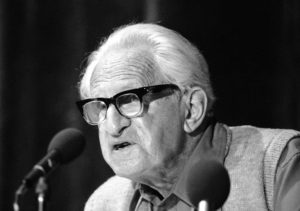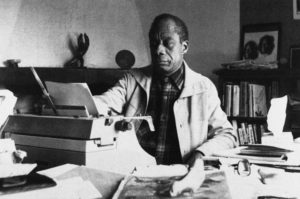When the Voiceless Speak
Filipino American author Alex Tizon spent his life raising up the lives of those rendered invisible by society. Temple University Press
Temple University Press
“Invisible People: Stories of Lives at the Margins”
A book by Alex Tizon, edited by Sam Howe Verhovek
The ashes filled a black plastic box about the size of a toaster. It weighed three and a half pounds. I put it in a canvas tote bag and packed it in my suitcase this past July for the transpacific flight to Manila. From there I would travel by car to a rural village. When I arrived, I would hand over all that was left of the woman who had spent 56 years as a slave in my family’s household.
This is how Alex Tizon starts his deeply personal essay, “My Family’s Slave.” The article ran in The Atlantic after his sudden death in 2017, and is the centerpiece of a collection of Tizon’s works called “Invisible People: Stories of Lives at the Margins.” He was hardly a household name. Tizon was one of three Seattle Times reporters who won a Pulitzer Prize in 1997 for “their investigation of widespread corruption and inequities in the federally-sponsored housing program for Native Americans, which inspired much-needed reforms.” Despite this towering professional achievement, Sam Howe Verhovek, a friend and colleague of Tizon when he worked at the Los Angeles Times, thinks he deserves more, and has edited this collection of Tizon’s stories and articles. Through a diverse catalog, Verhovek showcases Tizon’s unique gift for giving voice to those invisible people whom the world has chosen to ignore.
Tizon brings a wide breadth of subjects to life, from a native woman at the edges of civilization to a man in search of UFOs, from a teenage gang member in prison for murder to a Khmer Rouge survivor facing lifelong trauma. But Tizon was no ordinary reporter: In every story, Tizon lifts the voice of his subject with an eloquence and dignity that reflect a deep human respect for each of them.
After the tragic events that unfolded on the morning of Sept. 11, 2001, Tizon and Seattle Times photographer Alan Berner went on a road trip across America, searching for the responses of ordinary Americans to the terrorist attacks; those interviews eventually became the “Crossing America” series. Many of the stories captured in “Crossing America” are reprinted in this book.
On their travels, Tizon and Berner met Yazzie, a Navajo woman who stands “small and imperial, like a miniature queen, 58 years old but with the demeanor of an ancient . . . she speaks no English and has no desire to learn. Yazzie has never left the reservation.” One would assume that a person so distant from a metropolis like New York would not have much to say about 9/11, and yet Tizon is able to mine this:
Yazzie said she heard about what happened, holding up two fingers of her left hand, and then crashing into them with the index finger of her right. . . . She said she felt bad for the children.
What children, we ask. The children who died, the children whose parents were killed? The children of the terrorists? The children on the reservation who now fear airplanes?
“The children,” she said, and looked away.
Along with Tizon’s efficient, state-the-facts reporting, almost every story in “Invisible People” has this moment. A moment where the seemingly straightforward reporting is held up to the light and a kind of existential expressionism is revealed. Suddenly, the news story is no longer just a news story. It stops you in your tracks. It asks deep questions of you. It implicates you and, as we find out, it’s because Tizon let his guard down and implicated himself.
A mail-order bride from the Philippines is murdered by her new husband. It’s a story tackling hot button issues like immigration, domestic abuse, the internet, globalism and even gun control. Tizon touches on all of them at one point or another, but in the midst of it all finds a moment where all of that becomes almost irrelevant:
In the minds of her family, Susana left the island in white and returned in white. They videotaped her memorial service and entombment. They were eerily similar to her wedding and reception—the same church, same crowd, with her parents looking equally lost in the proceedings, and Susana dressed in elegant white, the center of it all.
At the end of the memorial service, only a pane of glass separated her from the people who stood in a long, sweltering line to get one last look. A parent who attended the service spoke of her young child’s reaction: “How come she’s not sweating?” the child asked.
The mother said, “She’s in a cold place now.”
Everyone here knows what she meant. In Cataingan on most days, cold is a thing to wish for. Cold happens in places far from here, better than here.
Susana made it to one of those places, at least for a short time. So many others want a taste of that other, dreamed-of life—risks be damned. The vast majority won’t get past just thinking about it; then there are some who’ll take their chances, and a few who’ll find a cold unlike any other.
Each article is prefaced with a short introduction by a colleague or editor associated with the following story. Some of Tizon’s colleagues include an intimate anecdote about working with Tizon, giving us a sense of the man behind the articles. Nearly all of them relate what they admired most about Tizon as a journalist and as a writer. Before the story of Susana, a colleague from the Los Angeles Times, Terry McDermott, offers a way to read Tizon :
The piece is ambitious and concerns issues close to Alex’s heart—his ethnicity, the utter poverty of his home, the effect of that poverty and dreams of what might erase it, the complicated geography of desire. None of this is announced. The prose is unaffected, almost casual; he doesn’t say what he’s about but lets his detailed and careful reporting carry the load.
More often than not, however, the introductions exposed nuggets of texts that I would rather have discovered as a surprise:
One of the most difficult challenges for any writer is creating an ending that is poignant but not heavy-handed or—gasp—syrupy. . . . The last words of the piece strike a perfect note. . . . What a powerful walk-off line from a master narrative writer.
And yes, the introduction includes this final line. Spoiler alert anyone? While the prefaces were well-written and deeply felt, for most of the stories, I would have much preferred encountering Tizon on my own first.
Still, the introductions never completely steal the thunder from Tizon’s immersive portraits. Like a seasoned detective, Tizon surfaces seemingly mundane details of a person that prove to be a key to unlocking their character. Like a literary tuning fork, they are at once small but resonant. For the long-shot presidential candidate Michael Gravel who ran unsuccessfully for the Republican nomination in 2007, Tizon’s eye for detail at a hotel restaurant captures both Gravel’s hopes and his chances:
He wears the obligatory uniform of male presidential hopefuls, dark suit and tie, and looks top to bottom like a decent enough fellow, with his thinning white hair and rimless spectacles. The hostess glances at his shoes: black strap-on Velcro walkers.
She sighs: “This way,” she says.
Other times, a perfectly phrased image becomes the cornerstone of the story:
Shirly-Ann pads around the wall to the edge of her property and places a foot in the ditch, her fuzzy black house slipper set daintily in the dirt.
“That’s Canada,” she says, her words weighted with the notion that her foot is now subject to the rules of a different nation.
Tizon arrived at these details not simply through keen observation, but by how he questioned and approached his subjects. Almost every single one of his editors noted how Tizon listened to his subjects with an unmatched empathy. It is evident in his writing that he cared and respected every person he spoke with. It is evident in the way he deftly allowed his voice to recede to the background in order for his subjects’ voices to ring louder, truer. The result is writing that is simple and honest, writing that seems to come from the subjects themselves. Without sounding too trite, Tizon became a vessel through which these unheard voices could speak. The best example of this is when Tizon turns the narrative inward in “My Family’s Slave.” What begins as a personal confession becomes a vivid portrait of a woman whose story could be told only by Tizon. As his wife would later say, it was the story he was born to write:
We called her Lola [grandmother in Tagalog]. . . . She was 4 foot 11, with mocha-brown skin and almond eyes that I can still see looking into mine—my first memory. She was 18 years old when my grandfather gave her to my mother as a gift, and when my family moved to the United States, we brought her with us. No other word but slave encompassed the life she lived. Her days began before everyone else woke and ended after we went to bed. She prepared three meals a day, cleaned the house, waited on my parents, and took care of my four siblings and me. My parents never paid her, and they scolded her constantly. She wasn’t kept in leg irons, but she might as well have been. So many nights, on my way to the bathroom, I’d spot her sleeping in a corner, slumped against a mound of laundry, her fingers clutching a garment she was in the middle of folding.
As Tizon grew up, he and his siblings started to awaken to the reality of who Lola really was. His brother Arthur was the first to bring up the word “slave” and why it was appropriate:
Wasn’t paid. Toiled every day. Was tongue-lashed for talking back. Wore hand-me-downs. Ate scraps and leftovers by herself in the kitchen. Rarely left the house. Had no friends or hobbies outside the family. Had no private quarters. (Her designated place to sleep in each house we lived in was always whatever was left—a couch or storage area or corner in my sister’s bedroom.)
As with all his stories, Tizon is at his most eloquent in the quietest moments:
One day while Lola and I were putting away groceries, I just blurted out: “Lola, have you ever been romantic with anyone?” She smiled, and then she told me the story of the only time she’d come close. She was about 15, and there was a handsome boy named Pedro from a nearby farm. For several months, they harvested rice together side by side. One time, she dropped her bolo—a cutting implement—and he quickly picked it up and handed it to her. “I liked him,” she said.
Silence.
“And?”
“Then he moved away,” she said.
“And?”
“That’s all,” she said.
“Lola, have you ever had sex?” I found myself saying.
“No,” she said.
When his parents passed, Tizon brought Lola to live with own family, not to resume her normal duties, but to become a real grandma to his children, with all the benefits and none of the work. He got her the medical attention she never received, and insisted that she not lift a finger in the house—something she had tremendous difficulty doing. When Lola passes away, Tizon remembers “looking at the medics standing above this brown woman no bigger than a child and thinking that they had no idea of the life she had lived. She’d had none of the self-serving ambition that drives most of us, and her willingness to give up everything for the people around her won her our love and utter loyalty.”
Tizon’s searing insight into Lola’s history and her years of toil is interwoven with a chronicle of his trip from bustling Manila to a small village, to bring her remains back to her hometown. It’s a simple device, perhaps not even a wholly original one, but it works in a powerfully emotional way; the farther from the city we travel, the more we find out about Lola and the closer we are to saying a final goodbye.
Toward the end, Tizon did all he could to make up for the life Lola endured, but I wonder if he sensed that telling her truth to the world was the best way he could set her free. Perhaps his life’s work of giving voice to those who had been cast aside was fueled by his desire to give voice to this invisible person in his own life. “My Family’s Slave” would be published only after Tizon’s death but even without that context, the story has a finality to it, a feeling that it is a completion of a lifelong task.
The string of Tizon’s short articles that make up “Invisible People” can have a meandering, almost aimless feeling, but together they form a touching and illuminating retrospective. Together they exemplify what his colleagues admired most in his work: an intimacy and empathy with his subjects that permeated every word he wrote. The love and respect Tizon’s colleagues had for him is perhaps the clearest throughline in the collection, which makes “Invisible People” tinged with sadness. Many of the glowing accolades that preface each story read less as an introduction and more of a eulogy:
Being with Alex was a first line of a renga, an invitation, a beckoning to both go deeper and laugh at yourself. . . . Seemingly out of nowhere, after a long night with many friends, he told me about having done and experienced about all that he needed to. He said he was tired and if the end was near, he could handle that. . . . I tried to comprehend what he was telling me. He watched as my face contorted and then he laughed.
Tizon may very well have been one of those invisible people himself, a startlingly poetic writer hidden behind a beat reporter. Although he won a Pulitzer and a National Magazine Award, one feels that his writing may have never been fully appreciated in the way it should have been.
“Invisible People” is, in part, an effort to correct that.
Your support is crucial…With an uncertain future and a new administration casting doubt on press freedoms, the danger is clear: The truth is at risk.
Now is the time to give. Your tax-deductible support allows us to dig deeper, delivering fearless investigative reporting and analysis that exposes what’s really happening — without compromise.
Stand with our courageous journalists. Donate today to protect a free press, uphold democracy and unearth untold stories.










You need to be a supporter to comment.
There are currently no responses to this article.
Be the first to respond.